Choosing The Right Study Table Materials
Studying is an essential part of any successful educational journey. And what better way to enhance your learning experience than with the Study Table Materials for your learning space? Choosing the perfect Study Table Materials for your work table can make all the difference in creating an environment that promotes concentration, productivity and comfort.
In this blog post we will look at the different options when choosing Study Table Materials. Whether you’re a student looking to improve your learning space or a parent looking for durable and kid-friendly options for little learners, we’ve got you covered! From wood to metal, glass to MDF (medium density fibreboard), we dive into the unique properties and help you make an informed decision.
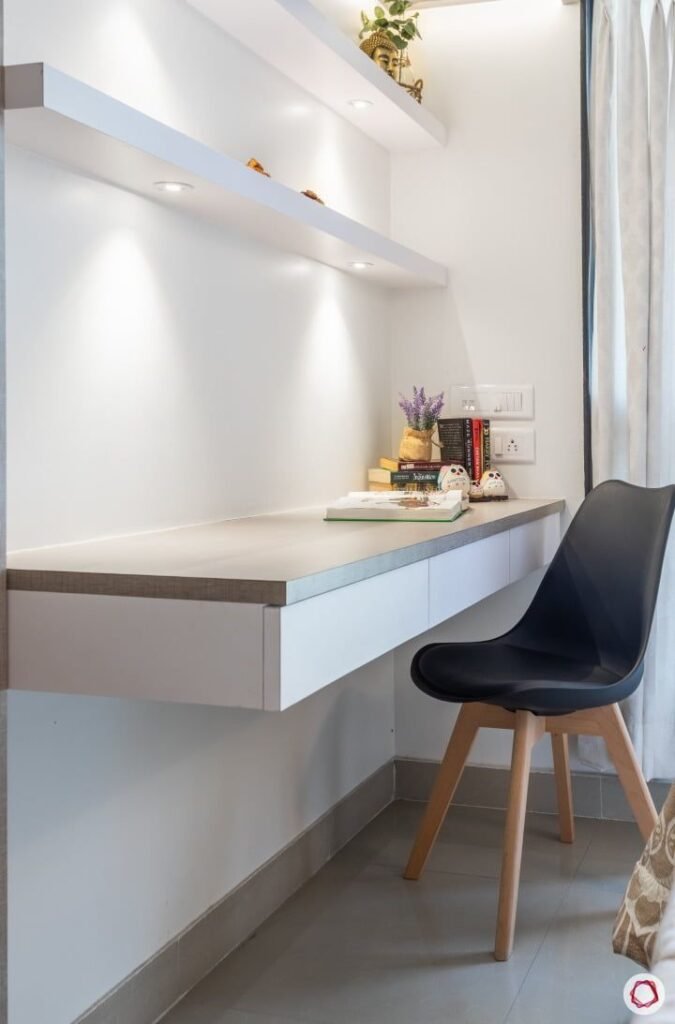
Overview of study table materials
Study Table Materials Explore your options
Choosing a right material for your study table is essential. As it requires a lot of thinking to choose any right material for your study table. We are here to help you out in your decision. So let’s dive into exploring the various options available to create a productive and inspiring learning space.
the first most commonly used material for study table is wood. Wood is a durable material and has enough strength to bear the loads of heavy objects placed on table. You can choose modish designs as well as traditional designs for your table in wood.
Another option worth considering is metal. Metal study tables are known for their sleek and modern design. They offer excellent durability and strength, making them ideal for heavy use or shared study spaces.
If you’re looking to create a sophisticated atmosphere in your study area, glass might be the material for you. Glass tabletops not only look sleek but also give the illusion of more space due to their transparent nature. Additionally, they are easy to clean and maintain.
Another material which durable, easy to install as well as environment friendly is High pressure laminate material.
For those seeking affordable yet practical options, MDF (medium-density fiberboard) could be the perfect choice.



Which materials are ideal for study tables?
Which Study Table Materials are ideal for study tables? You must be wondering that what material would be best for your study table that not only perform good function but is also aesthetically appealing and meet your needs.Following are some best materials for your study table.
A popular choice for study tables is wood. Wooden tables exude warmth and elegance and fit well into any room decor. They are also sturdy and durable, making them a good investment. Additionally, they can be easily repaired or repainted to give them a fresh look.
For those looking for a more modern look, metal study tables might be just the thing. Steel or aluminum tables are particularly stable and resistant to scratches or signs of wear. They also provide a smooth surface to work on.
You can choose glass tables as well if you want a neater and tidier look for your workplace. Glass tables are easy to maintain and can readily be cleaned without any stain left on them.You can choose tempered glass instead of regular glass as it has more strength to bear the weight of different objects placed on table.
If you are low on budget but still want the best study table then MDF(medium density fibre) is a good option for you.It is durable and can sustain heavy weights.It has an additional advantage that it does not shrink, swell or warp.It has an excellent finish and smooth surface which makes it an ideal material to work on.

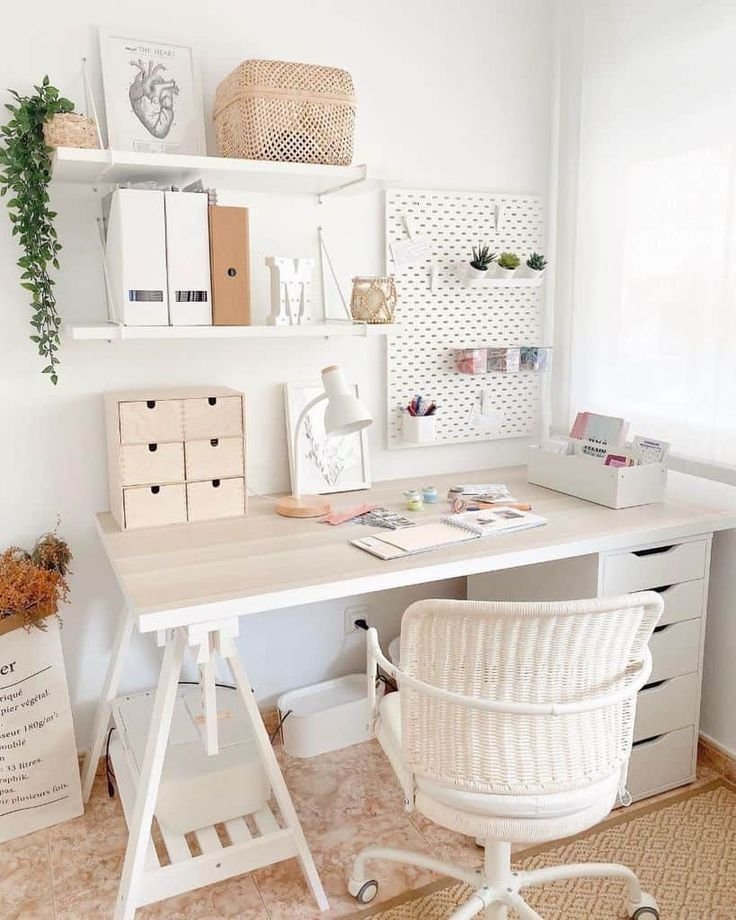
Best materials for study table construction
To design an optimal study table, it is crucial to choose the right materials. The choice of materials affects not only the longevity and durability of the table, but also its aesthetics and environmental friendliness.
- Wood
- Metal study tables are also very popular
- Another option for study table materials is glass.
- MDF (medium density fiberboard)
- High pressure laminate material
When choosing a material for children’s study tables, safety should be your first priority. You should choose such materials which are toxin free and environment friendly. Child-safe materials such as plastic or painted wood ensure there are no sharp edges or dangerous chemicals. EVA foam is another light weighted and good material for kids.
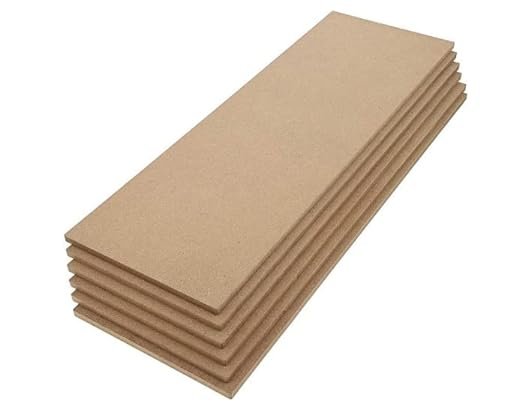

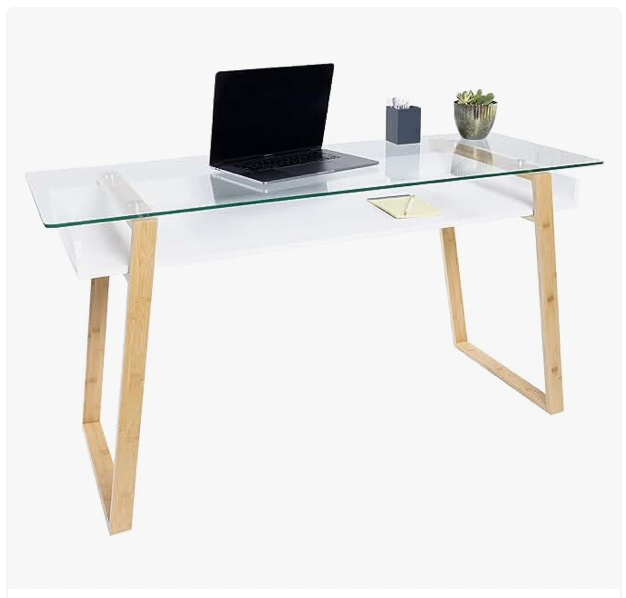
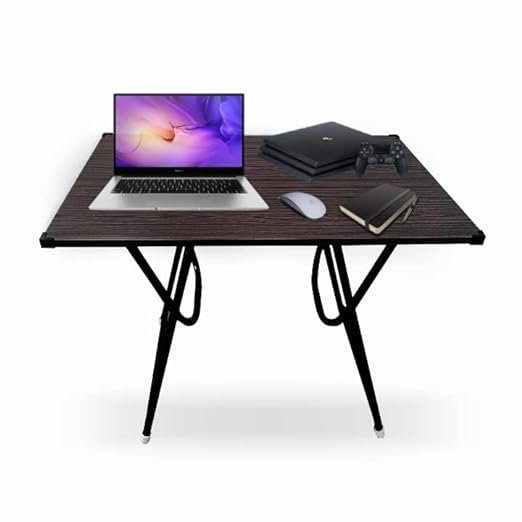
Key considerations for study table materials
Durability and Longevity
One of the important criteria for a study table is that it should withstand daily routine activities and should have longer shelf life.It should serve the purpose fully and should be durable.
One material that is known for its durability is wood. Solid wood tables are sturdy and can handle heavy books and equipment without sagging or warping. They also have a timeless appeal and can fit into any decor style. Plus, with proper care, they can last for generations.
Another option to consider is metal study tables.Metal tables are strong and durable as they can withstand heavy loads.Besides their incredible strength they give your workplace a modish and complete look. In particular, steel and aluminum are popular choices due to their strength and resilience. Steel tables are incredibly durable and provide excellent stability, making them suitable for heavy-duty use. On the other hand, aluminum tables offer a lightweight option that is still strong enough to support your study needs.

If you’re looking for something more modern or sleek, glass study tables might be the perfect choice for you. Glass tops not only add an elegant touch but also provide a smooth surface that is easy to clean. However, it’s important to opt for tempered glass tabletops as they are more resistant to breakage than regular glass.
MDF (medium-density fiberboard) study tables offer a cost-effective alternative while still providing decent durability. They are made by compressing wood fibers with resin under high pressure which results in a dense and stable material.
You can also customize your table by combining two materials like table top being made of wood and the the legs made of metal. This combo will not only adds strength that is required for a table but will also make your table look aesthetically appealing thus serving both the purposes.
For those who prioritize eco-friendly options, there are various sustainable materials available such as bamboo or reclaimed wood furniture. These materials not only contribute positively towards the environment but often possess exceptional strength too.
Aesthetics and Style
When it comes to choosing Study Table Materials for your study table, aesthetics and style play a crucial role in creating an inspiring learning environment. The visual appeal of the materials you select can greatly impact your motivation and productivity.
One popular choice for study tables is wood. Wood offers a timeless and elegant look that can complement any decor style. It has a property of reflecting light thus making your workplace ambiance bright and gloomy.Whether it’s a classic oak or a sleek walnut finish, wooden study tables exude warmth and natural beauty and make your workspace look more spacious as they reflect light. Wood is the only material which can be hand crafted so you can give a traditional touch to your workplace.
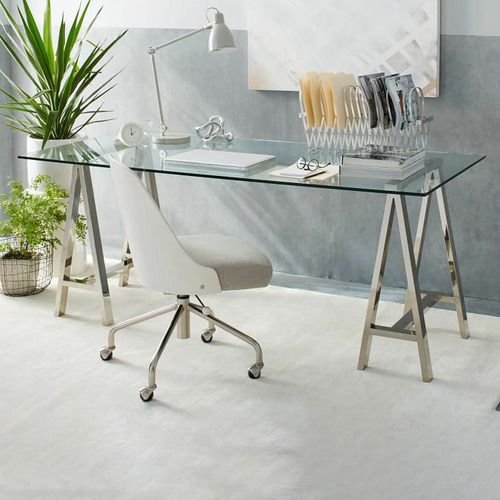
On the other hand, metal study tables offer a modern and contemporary vibe. With their clean lines and minimalist designs, they are perfect for those who prefer a more industrial or futuristic aesthetic. Steel study tables provide durability and stability while aluminum offers lightweight versatility.
For those looking to add a touch of sophistication to their learning space, glass study table tops are an excellent choice. Glass gives off an air of elegance and openness due to its transparent nature. It creates an illusion of spaciousness while reflecting light, making the room feel brighter.
Another Study Table Material worth considering is MDF (medium-density fiberboard). MDF study tables offer flexibility in terms of design as they can be easily shaped into various forms with intricate details. They also come in different finishes such as laminate or veneer, allowing you to choose one that matches your personal style.
When selecting Study Table Materials for children’s study tables, safety should be prioritized alongside aesthetics. Opting for non-toxic paints or varnishes on wooden surfaces ensures that there are no harmful chemicals present around young learners.
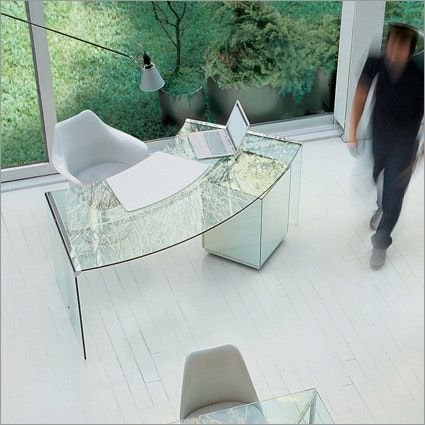
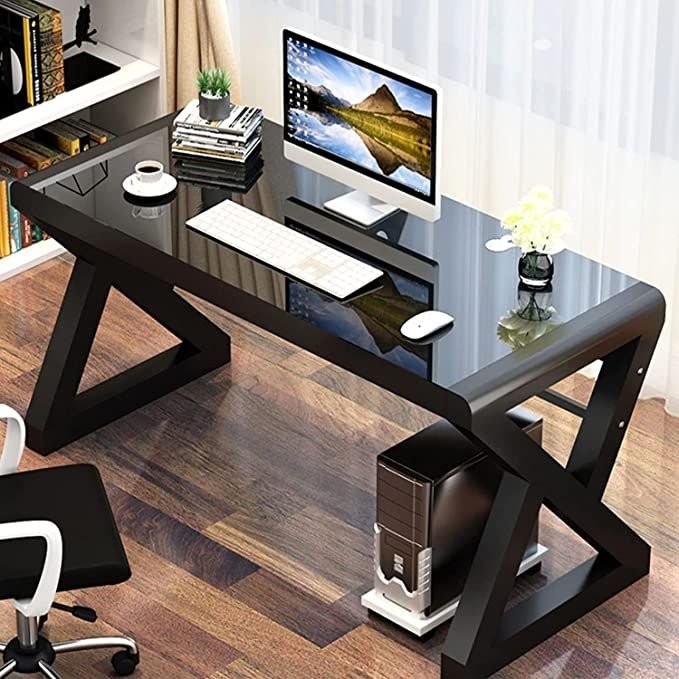
Weight and Portability
Environmentally Friendly Materials
Environmentally friendly Study Table Materials are more important now than ever, especially when it comes to choosing study table materials. More and more people are paying attention to sustainability and environmental protection when making purchasing decisions. Luckily, there are a variety of eco-friendly options for study tables.
One option is to use wood from sustainably managed sources. It is free from any sort of toxins. Wood is a natural material that is renewable and easy to recycle. Wood adds warmth and style to your workplace. Bamboo is another eco friendly material which gives a traditional and classical look to your table.
Another environmentally friendly material is metal, especially recycled metal. When you choose a study table made of aluminum or steel, you can be assured that the metal used has been recycled, meaning fewer resources have been used.Using recycled metal tables will not only make you a responsible human but you are also contributing to bring a positive change in the environment.
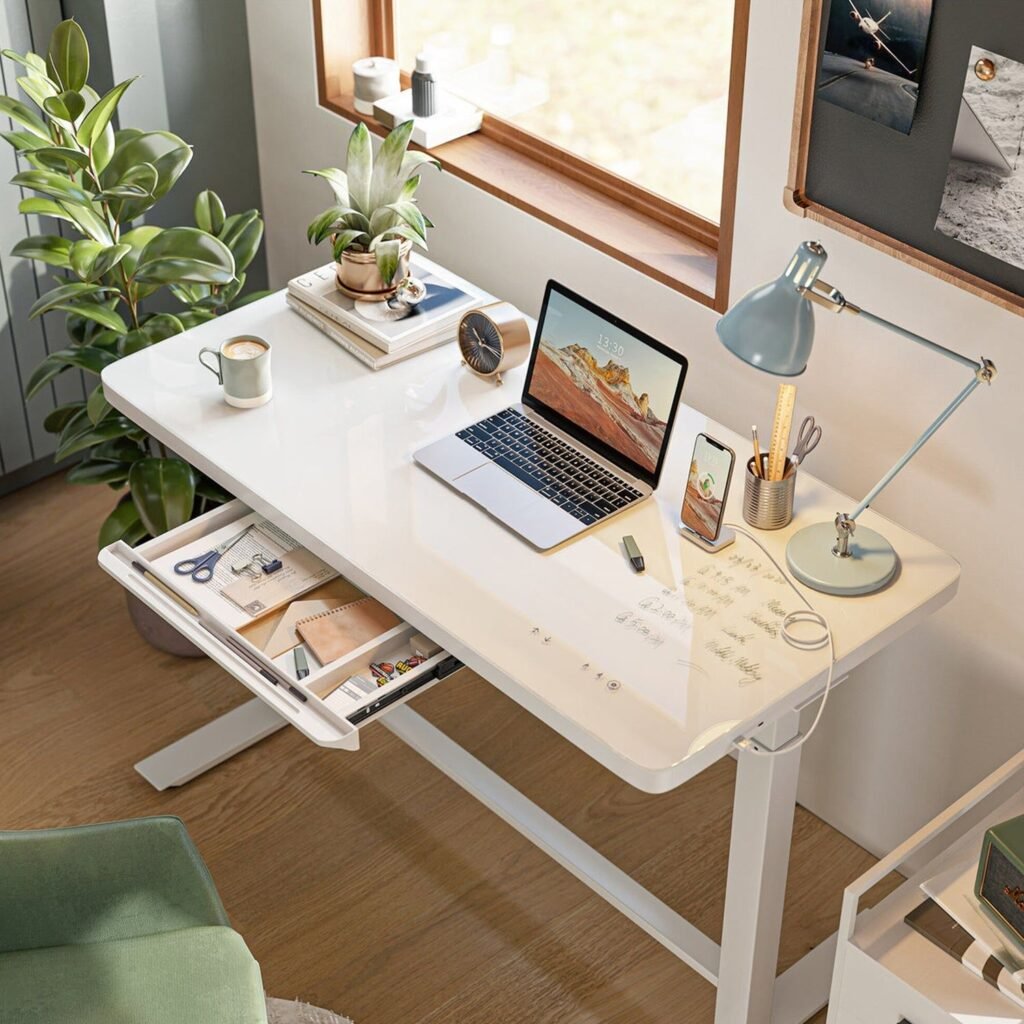
Glass can also be considered an environmentally friendly material because it is durable and does not wear out as quickly as other surface materials. It can also be easily recycled and can be re used. It has an advantage that its quality is not impacted even after recycling.
When it comes to children’s study tables, we should choose materials that are both safe and environmentally friendly. For example, table tops made of MDF can be used because they can be made formaldehyde-free.
Popular study table materials
Wood
Wood is an elegant and versatile Study Table Material that is ideal for study tables. It radiates warmth and gives any room a natural atmosphere. Wooden tables are also durable and sturdy, making them a long-term investment.
Another advantage of wooden study tables is their variety of colors and textures. Whether you prefer a light maple table or a dark mahogany table, there is a wide selection available. Each table has its own charm and fits seamlessly into different interior styles.
In addition, wood is an environmentally friendly Study Table Materials because it is renewable. Growing trees for timber can be sustainable by ensuring new trees are planted.
Whether you choose solid wood or veneer, wooden study tables can last for years. However, regular care such as applying furniture polish or oil is recommended to maintain the beauty of the material.
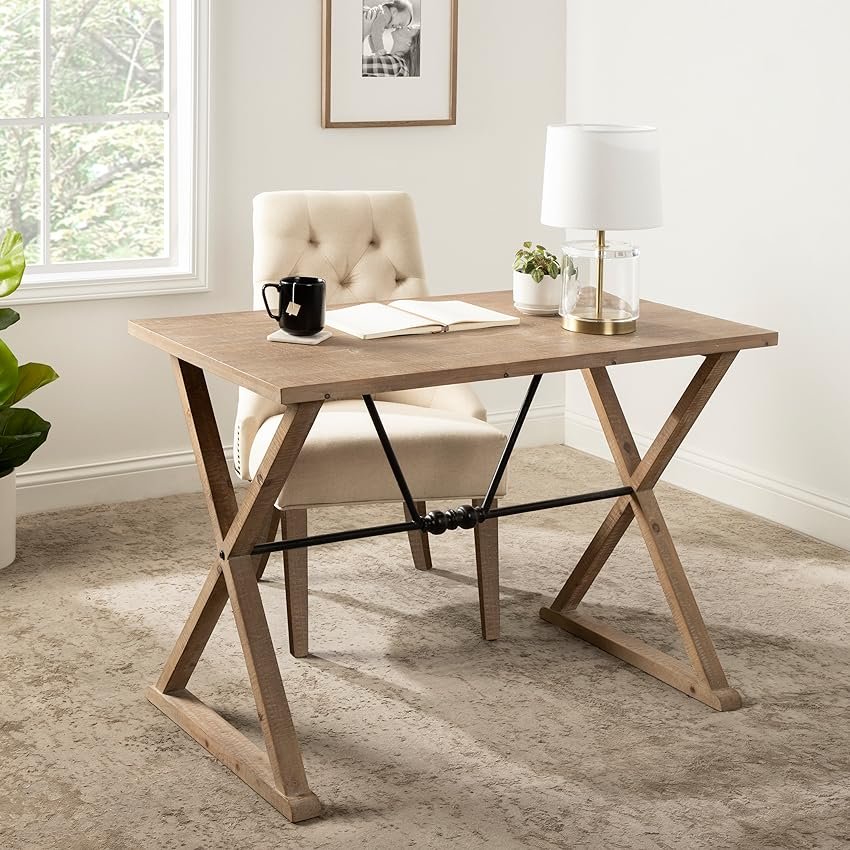
Overall, wood offers many advantages as a study table material: durability for everyday use in a learning environment as well as aesthetics and style to suit every taste. If you value sustainability and want an elegant design at the same time, a wooden study table could be the right choice!
Advantages of study tables made of wood
Natural and aesthetic appearance: Wood is a warm and attractive material that creates a calming atmosphere. It fits well into different interior styles and helps create a comfortable learning environment.
Longevity: Wooden tables tend to be very sturdy and resistant to wear and tear. They have long shelf life and are therefore a long-term investment.
Sustainability: Wood is a renewable raw material that is environmentally friendly as long as it comes from sustainably managed forests. This helps reduce environmental impact.
Customizability: Wooden tables are easy to work with and customize, making them ideal for individual needs and room design. They can be painted, stained or made into different shapes and sizes. They are source of artwork display.
Health Benefits: Wood surfaces can improve indoor air quality and helps in stress reduction. They do not emit harmful chemicals or fumes. This creates a healthier learning environment.
Types of wood for study tables
There are different types of wood that can be used to make study tables, and the choice often depends on personal preference, budget, aesthetics and intended use. Here are some common types of wood used for study tables:
Oak: Oak is a popular type of wood for study tables due to its durability and distinctive grain. It gives the table a classic and timeless look. It is hard and bulky thus adds strength to the table. They have high amount of tannins in them which prevent them against insect or fungal attack.

Maple: Maple wood is light and evenly grained. It gives the table a bright and clean appearance. Maple is known for its robustness and resilience. It resists against warping ad shrinkage thus making it a good sustainable material for table.
Cherry: Cherry wood is known for its warm, reddish color and characteristic grain. It gives the table an elegant and noble look. It has low stiffness and resists against shocks thus making it a friendly material to use for table.
Walnut: Walnut wood is characterized by its darker, often nut brown color and natural grain. It gives the table a rich and luxurious look.
Beech: Beech wood is light and evenly colored. It is affordable and durable, making it a practical choice for function
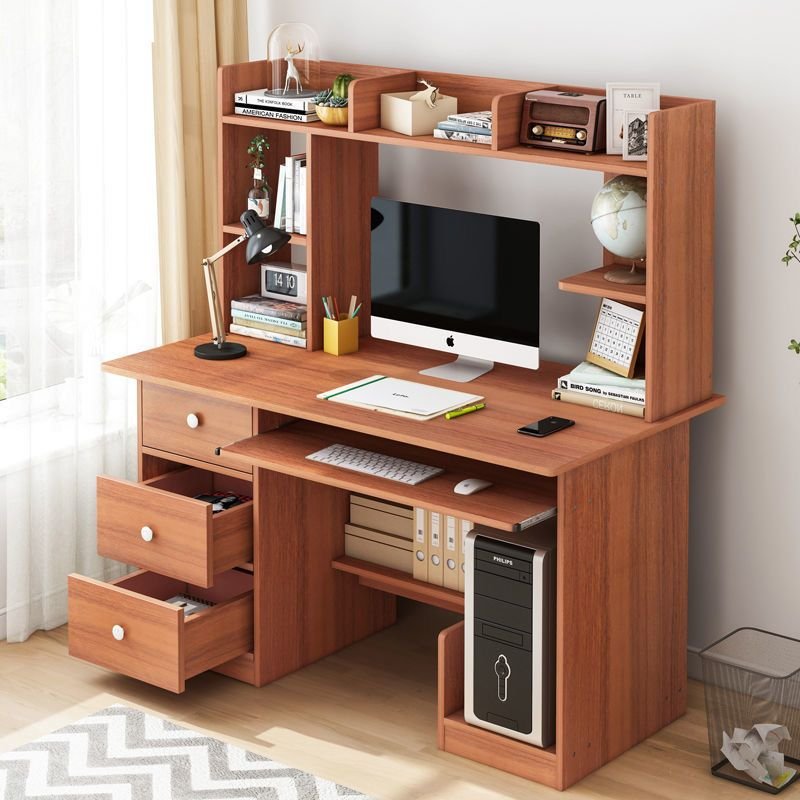

Care tips for study tables made of wood
Proper care of wooden study tables can help maintain their beauty and durability over the years. Here are some care tips to keep in mind:
Polishing: Apply wood varnish twice a year in order for table to last longer.
Use appropriate cleaning products: Follow the manufacturer’s instructions. Harsh chemicals tend to damage your wood rapidly thus using a mild and material friendly cleaning product is advisable.
Heat and Moisture Protection: Avoid direct contact with hot pots, plates or cups to prevent heat spots. Also be careful not to leave wet or damp items on the table as water stains can damage the wood.
Use of Coasters and Tablecloths: Use coasters or tablecloths to prevent scratches and stains, especially when using the table for meals or other activities where liquids could spill.
Avoid direct sunlight: If possible, do not place the study table in a location where it will be exposed to direct sunlight, as UV rays can bleach and dry out the wood.
Metal
Metal study tables are a popular choice for many people due to their versatility and durability. Here are some benefits they offer:
1. Robustness: Metal is a very robust material that can withstand everyday wear and tear. A metal study table can last for years and is less prone to damage compared to other materials.
2. Stability: Metal study tables are typically more stable than their wooden or glass counterparts. They offer a solid work surface that doesn’t wobble even with heavy books or computers.
3. Modern design: Metal tables often have a modern and contemporary design that goes well with different interior styles. They add a touch of elegance and sophistication to the room.
4. Easy to clean: Unlike wooden tables, metal tables do not require any special care or special cleaning products. A simple wipe with a damp cloth is enough to keep them clean.
5. Resistant to moisture: Unlike wood, metals such as steel or aluminum cannot be damaged by moisture. This makes them ideal for high humidity environments such as bathrooms or kitchens.
Overall, metal study tables offer a number of advantages in terms of durability, stability and aesthetics.
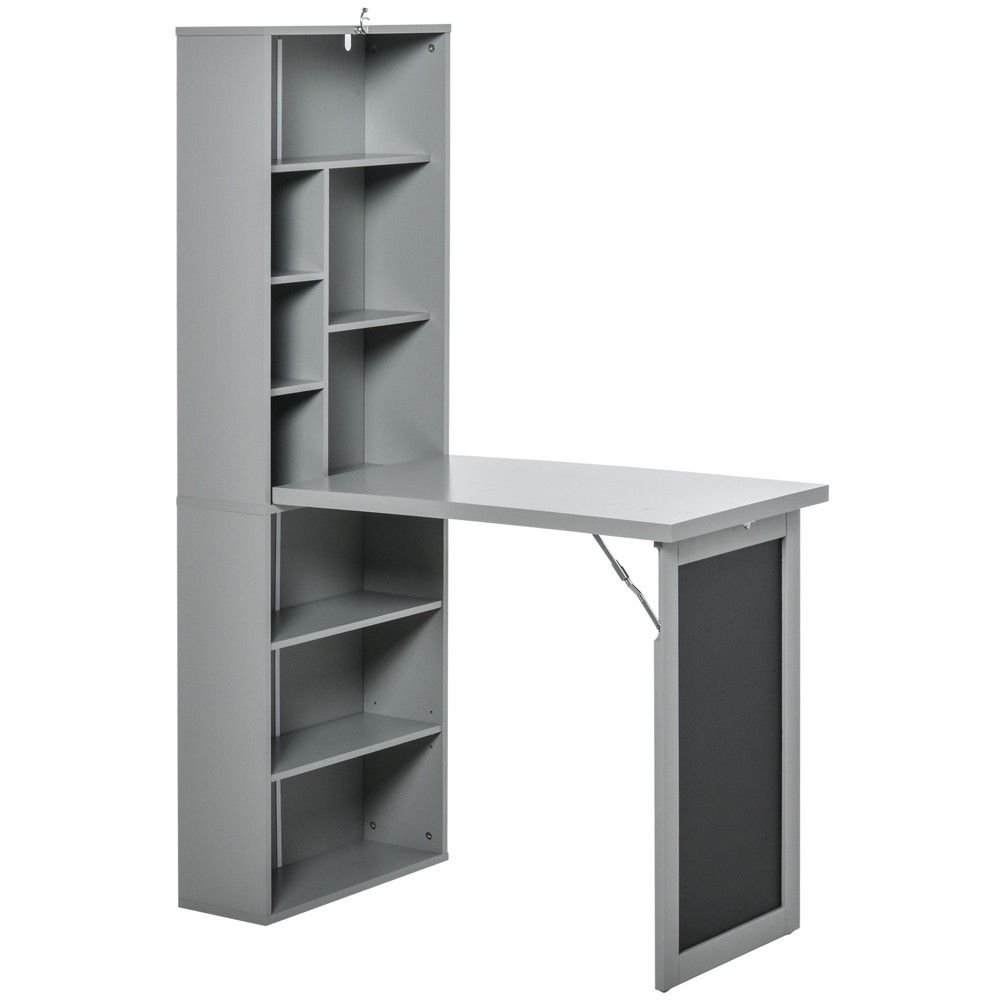


Advantages of study tables made of metal
Metal study tables offer a variety of benefits that make them a popular choice for various learning environments. Here are some of the key benefits:
Robustness and durability: Metal tables are usually extremely robust and resistant to wear, shock and wear. They are therefore durable and last a long time even with intensive use.
Stability: Metal tables tend to be very stable and are less likely to wobble or be unstable, even on uneven surfaces
Steel vs. Aluminum study tables
When it comes to choosing the right Study Table Materials for your study table, you need to weigh up between steel and aluminum study tables. Both materials have their advantages and disadvantages that should be taken into account when making your decision.
Steel study tables are known for their durability and sturdiness.These tables have no pores in them thus if water or any other drink happens to spill on the table then it means it wont absorb and will be easily cleaned. The robust housing provides a solid foundation for your learning activities and ensures a long service life of the table.
On the other hand, aluminum is a lightweight material that can be recycled and has the advantage of being easy to transport. If you need to move your study table frequently or need a portable table, aluminum might be a better choice.
Another factor to consider is the appearance of the table. While steel tables can often have an industrial look, aluminum gives the room a modern feel with its sleek design.
Ultimately, choosing between a steel or aluminum study table depends on your individual needs and preferences. Think about your needs – whether you’re looking for robustness or prefer mobility – and then make an informed decision!


Maintenance of metal study tables
Not only are metal study tables sturdy and durable, but they also require some maintenance to maintain their appearance and functionality. Here are some tips on how to properly care for your metal study tables.
1. Cleaning: You can clean metal surface once a week as metal catches less dust.Use mild soaps or detergents to clan metal surface as harsh chemical might cause stains on metal which are then hard to remove.
2. Rust protection: If your metal table is used outdoors, it is important to protect it from rust. Regularly apply a thin layer of clear varnish to the surface to prevent corrosion.
3. Polishing: Give your metal table a shiny look by occasionally treating it with a special metal polishing agent. This also helps minimize small scratches and freshens the appearance of the table.
4. Be careful with heat: Every one end up having hot tea or coffee on study table but be careful of the spills as they will leave a mark on your table.Use table mats or coaster in order to avoid such accidents.
By following these simple maintenance guidelines, your metal desks can look great for years to come and serve you faithfully while you study!
Glass
Glass is a fascinating material that offers a variety of benefits for study tables. The transparent and smooth character of the glass adds a touch of elegance and sophistication to any room. It allows light to shine through, creating a bright and open atmosphere that is ideal for learning.
One of the main attractions of glass as a table material is its durability. Unlike wood or MDF, glass is not easily worn or damaged. It is scratch-resistant and impervious to stains, making it a practical choice for everyday use.
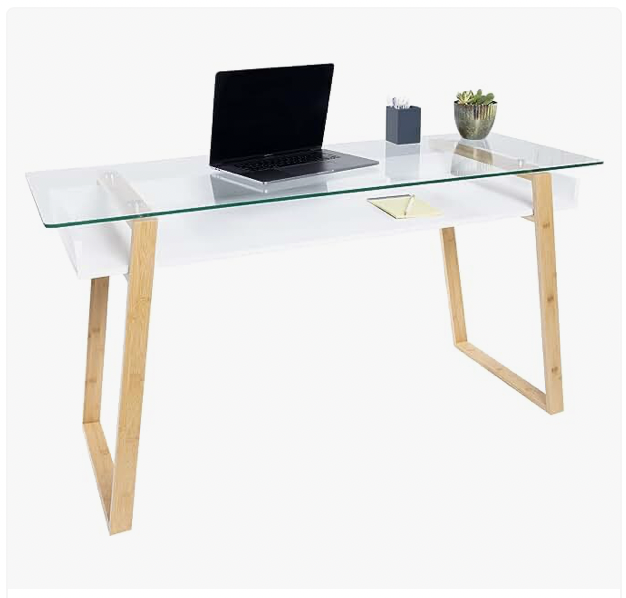
Another advantage of glass table tops is that they are easy to clean. A simple wipe with a damp cloth is usually enough to keep them clean. This saves time and effort in maintaining the study table.
When it comes to choosing between tempered glass and regular glass, it is important to remember that tempered glass is much more resistant to breakage. It has undergone a special process that makes it stronger than traditional glass.
When it comes to style, glass designs offer endless possibilities. From minimalist clear finishes to frosted or etched glass, there are many options to personalize your study table.
However, glass also has its disadvantages – it can be fragile and therefore requires special care when handling.
Why choose glass for study tables?
Glass is a fascinating material that is often associated with elegance and modernity. However, in addition to being beautiful to look at, it also has many practical benefits that make it an excellent choice for study tables.
First of all, glass provides a smooth and flat surface that is ideal for writing and drawing. Unlike wood or metal, glass does not leave uneven spots or scratches on the paper. This allows learners to fully concentrate on their tasks without being distracted by inconveniences.
Another advantage of glass tables is that they are easy to clean. Spilled liquids or leftover food can be easily wiped off with a damp cloth. Unlike other materials, stains do not penetrate the surface and leave permanent marks.
Additionally, glass naturally reflects light, creating a bright workplace environment. This can be particularly beneficial for preventing eye strain and creating a pleasant learning atmosphere.
Glass study tables are also versatile and fit well with different interior styles. They can be used in both modern and traditional spaces, adding a touch of class to any room.
Tempered glass tabletops vs. regular glass tabletops
Glass is a material that is both aesthetically pleasing and functional for study tables. It instantly adds a modern and elegant touch to any room. But when it comes to choosing the right tabletop, you’re faced with a decision: tempered glass or regular glass?
Tempered glass tabletops are strong and resistant to breakage. Through a special manufacturing process, the glass is heated and then quickly cooled, significantly improving its strength. This makes them ideal for use in a learning environment where unexpected shocks may occur.
While regular glass table tops are also nice to look at, they are less robust compared to tempered glass. When damaged, they tend to break or splinter. Therefore, this could pose a safety risk if used intensively by children or young people.
The choice between tempered glass table tops and regular glass table tops ultimately depends on your individual needs. If you’re looking for maximum durability and don’t want to worry about accidental damage, tempered glass is the best option for your study table.
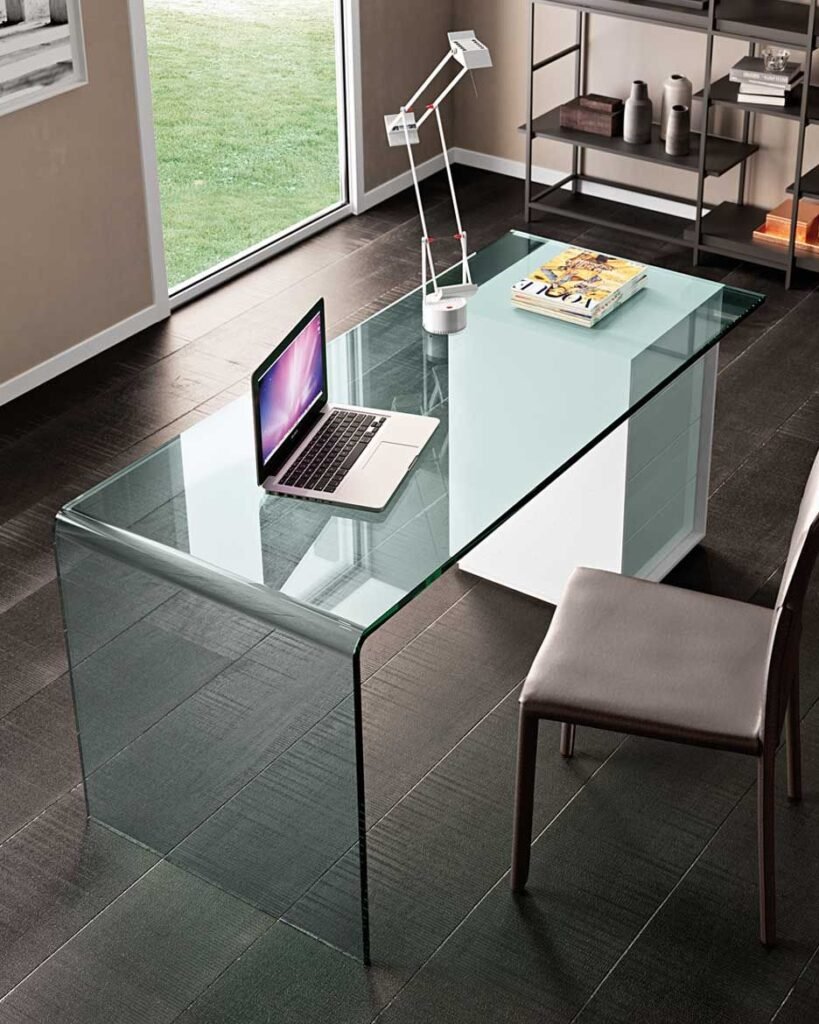
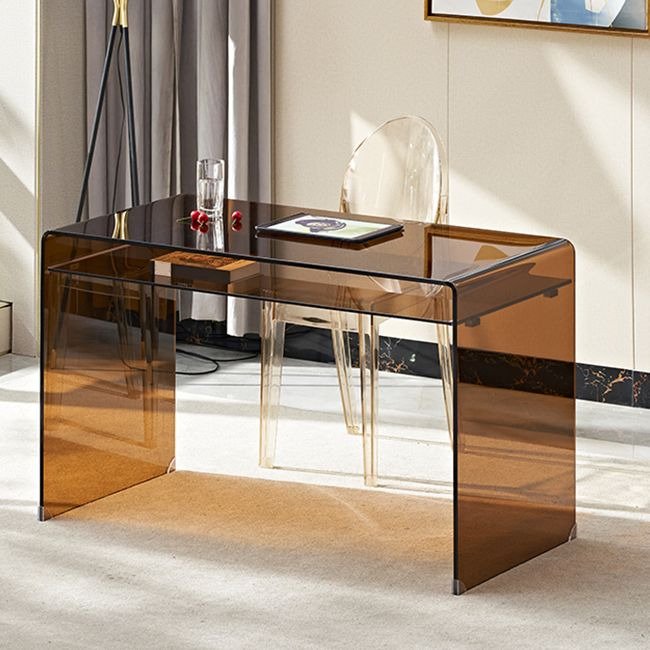
MDF – Medium Density Fiberboard
MDF (medium density fiberboard) is a Study Table Materials often used for study tables and offers some unique properties. It is a type of wood material made from wood fibers pressed with resin.
An advantage of MDF study tables is their smooth surface, which is ideal for writing and working. Its density also makes it very stable and resistant to scratches and damage. In addition, MDF is easy to work with and can be painted or laminated in different colors.
However, MDF also has some disadvantages to consider. It tends to absorb water and can swell or deform when wet. Therefore, it is important to ensure that it is protected from moisture.
Compared to solid wood study tables, MDF tables are typically less expensive while still offering a similar look. They are also lighter than solid wood furniture, making them easier to transport.
Overall, MDF study tables are a popular choice due to their versatility, durability, and affordability. If cared for properly, they can last for many years and provide you with a sturdy workspace while you study
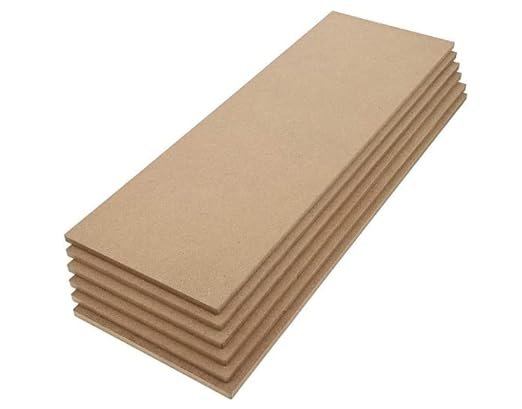
Pros and cons of MDF study tables
MDF, also known as medium-density fiberboard, is a popular material used for constructing study tables. It is made from wood fibers and resin that are compressed together to create a dense and durable board. MDF has its pros and cons when it comes to study tables.
One of the advantages of MDF study tables is their affordability. They are generally more budget-friendly compared to solid wood or metal options. This makes them an attractive choice for those on a tight budget or looking for cost-effective furniture solutions.
Another benefit of MDF study tables is their versatility in design. Since they are made from engineered wood, they can be easily shaped into different forms and styles. Whether you prefer a modern minimalist look or a classic traditional design, MDF can be customized to suit your taste.
However, there are some drawbacks to consider with MDF study tables as well. One main concern is their durability over time. While MDF is sturdy, it may not withstand heavy use or rough handling as well as solid wood or metal materials.
Additionally, moisture can be an issue with MDF study tables. The material tends to absorb water easily, which can lead to swelling or warping if exposed to excessive moisture. Therefore, it’s important to keep them away from areas prone to spills or high humidity levels.
MDF vs. Solid Wood study tables
When it comes to choosing Study Table Materials for study tables, one common comparison is between MDF and solid wood. Both have their own unique qualities and can be suitable options depending on your specific needs.
MDF, as the name suggests, is made by compressing wood fibers together with resin under high pressure. It offers a smooth and uniform surface that is easy to paint or laminate. MDF study tables are generally more affordable compared to solid wood ones.
On the other hand, solid wood study tables exude natural beauty and charm. Each piece of solid wood has its own distinct grain pattern, making every table unique. Solid wood also has great durability and longevity if properly cared for.
One downside of MDF is that it is not as resistant to moisture as solid wood. Excessive exposure to water can cause swelling or warping in MDF furniture. Solid wood, however, tends to handle moisture better.
In terms of environmental impact, some may prefer solid wood due to its renewable nature while others may opt for MDF because it utilizes leftover wood fibers from other processes.

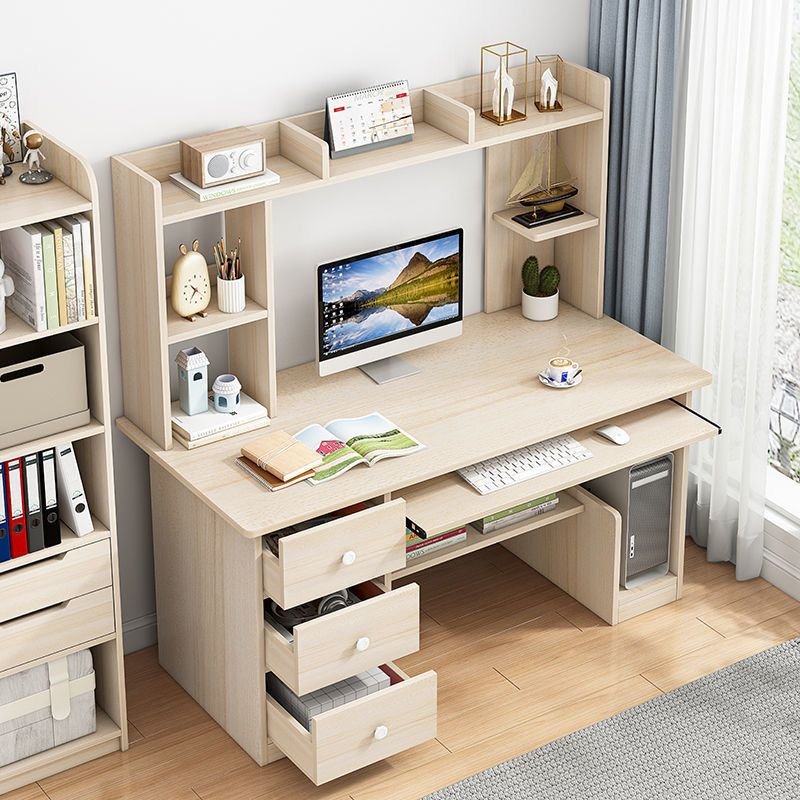
Special study table materials
Child-friendly materials
When choosing the best material for your kid’s study table then you should keep some considerations in your mind. Choose a material which is toxin free and is safe for your child. Children love to explore things so material that can be designed or customized easily should be chosen. Lightweight materials are good option for kids.
A popular material for kid-friendly study tables is plastic. Plastic tables are easy to clean and can withstand the occasional knocks that may occur throughout the day. Additionally, there are many eco-friendly plastic options on the market today.
Another option is wooden tables. Wood gives the room a warm and cozy atmosphere and is a natural material that is safe for children. There are also furniture pieces available made from recycled or sustainable wood, making them an environmentally conscious choice.
Bamboo is another good eco friendly as well as lightweight material for kid’s study table
For parents looking for even more durable options, metal study tables might be suitable. These tables are sturdy and resistant to wear and tear from active children.

When choosing child-friendly study table materials, safety and durability should be your top priority. A combination of different materials can also be a great way to achieve a unique look.
Overall, choosing the right material for a child’s study table plays an important role in creating an optimal learning environment. The use of child-friendly materials not only ensures safety and durability, but can also encourage creativity and concentration
Ideal materials for study tables for children
Children are curious and energetic creatures, so it is important to choose the right materials for their study tables. Ideal materials for children’s study tables should be safe, durable and child-friendly.
A popular material for children’s learning tables is plastic. It is easy to clean, sturdy and comes in various bright colors that can arouse children’s interest. Plastic is also shockproof and can withstand rough handling by children.
Another option is wooden tables. Solid wood learning furniture offers a natural aesthetic and is environmentally friendly. They have a warm appearance and can be designed in different colors. Wooden tables usually last a long time and can even be passed down to younger siblings.
For a modern design, tempered glass tabletops could be interesting. These table surfaces are smooth, easy to clean and provide an elegant look for the child’s learning environment. However, care must be taken to ensure that they are not fragile.
MDF is another commonly used for children’s study table materials. It offers durability at an affordable price as well as various design options through its wood grain fabric or painted finish.


Safe and durable materials for children’s learning furniture
When it comes to choosing Study Table Materials for children’s study furniture, safety and durability are paramount. After all, kids can be quite rough on their belongings, so it’s important to select materials that can withstand their active lifestyles.
One option for safe and long-lasting learning furniture is solid wood. Wood is a natural material that has been used for centuries in furniture construction due to its strength and durability. It is also less likely to contain harmful chemicals found in some other types of materials.
Another consideration when selecting materials for children’s study furniture is the use of non-toxic finishes. Look for products that have been treated with water-based or low-VOC (volatile organic compound) finishes, which emit fewer harmful fumes into the air.
For those looking for an alternative to solid wood, another viable option is high-quality plywood or engineered wood. These materials are manufactured by layering thin sheets of wood veneer together with adhesive, resulting in a strong and stable product.
In addition to being safe and durable, it’s important to choose materials that are easy to clean and maintain. Look for surfaces that can be wiped down easily without leaving any residue or stains behind.
When selecting materials for children’s study furniture, prioritize safety and longevity. Opting for non-toxic finishes and sturdy construction will ensure your child has a comfortable space where they can focus on their studies without worry.
Lightweight materials
Lightweight materials are a fantastic option for study tables. They not only offer low weight, but also flexibility and easy handling. When it comes to creating the perfect study space, lightweight materials can help you move the table around as needed or even transport it to different locations.
An example of a lightweight material is aluminum. It is robust and at the same time light enough to make it easy to transport. Aluminum study tables are therefore ideal for people who want to change their study area frequently or need a mobile workstation.
Plywood is another good lightweight material for study table.To give it a nice and fine finish you can paint it as well.
If you want to give your table a natural look and want to add a traditional element to your table then bamboo is a good option.It is lightweight and recyclable.

Study tables with lightweight frames

Portability and user-friendliness

Environmentally friendly choices
Environmentally friendly choices are of great importance when it comes to choosing the right study table materials. By choosing sustainable options, you are actively helping to protect our environment. There are several ways you can create eco-friendly study tables.
One option is to use recycled material. You may find a manufacturer that makes study tables from reclaimed pieces of wood or offers table tops made from recycled glass. These materials help to reduce waste and conserve resources.
Another approach is to choose natural materials such as bamboo or cork. These materials are rapidly renewable and require less energy to produce compared to other options such as plastic or metal.
You should also pay attention to low-pollutant paints and adhesives. Many traditional paints contain chemicals that can be harmful to both health and the environment. Instead, opt for greener alternatives with lower VOC (volatile organic compounds) emissions.
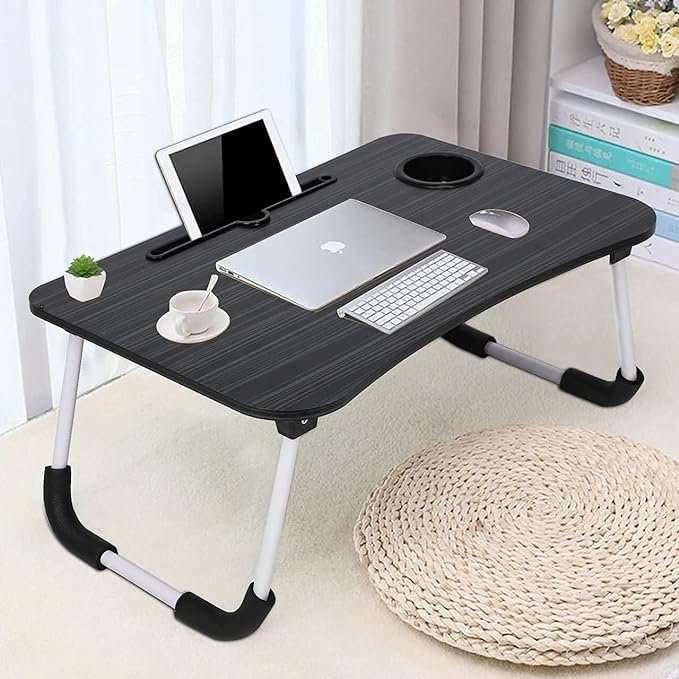
Sustainable materials for eco-friendly study tables

The importance of green study table materials
In current era where modernization has replaced traditional and classical things and when global warming has become one of the main concern across the globe we can choose to use some eco friendly materials for our study table. Green study table materials play a significant role as they can both protect the environment and create healthy learning environments.
When choosing green learning table materials, we should focus on sustainable resources. Materials like bamboo and cork are good options because they grow quickly and are renewable. These natural materials reduce the ecological footprint and help preserve our forests.
Recycled metal and plastic can also be used which has an extra advantage of having great strength and durability.
In addition, we should choose Study Table Materials that are free of harmful substances. This is especially important for children’s tables as children can be more sensitive to toxic substances. There are many eco-friendly paints and varnishes on the market that do not contain harmful chemicals.
In addition to sustainability and health, green learning table materials also offer an aesthetic element. Natural wooden surfaces radiate warmth and give every room a pleasant atmosphere. The use of recycled study table materials can also be an interesting design element and emphasize an individual style.
Combining materials
Custom study tables with mixed materials
To enhance the uniqueness of your study table and make it creative and stylish you can combine different materials and customize your study table.This combination technique provides you with not only durability but with aesthetics as well.
A popular approach is to combine wooden or metal legs with a glass or MDF table top. Now this combination has all the three important materials in it.Each material holds its importance be it in terms of strength, durability, aesthetics. The use of different materials also allows you to combine different textures and colors to reflect your personal taste.\==
Additionally, custom-made study tables with mixed materials offer flexibility to customize to your needs. Depending on your preferences, you can choose whether you want to place more emphasis on the aesthetic aspect or whether robustness is more important to you. With these types of tables you have the opportunity to get the best of both worlds.
Overall, custom study tables materials with mixed materials offer endless possibilities for creating a unique study table that is both functional and aesthetically pleasing. These options are definitely worth investing in to create a study space that’s perfectly tailored to your needs!

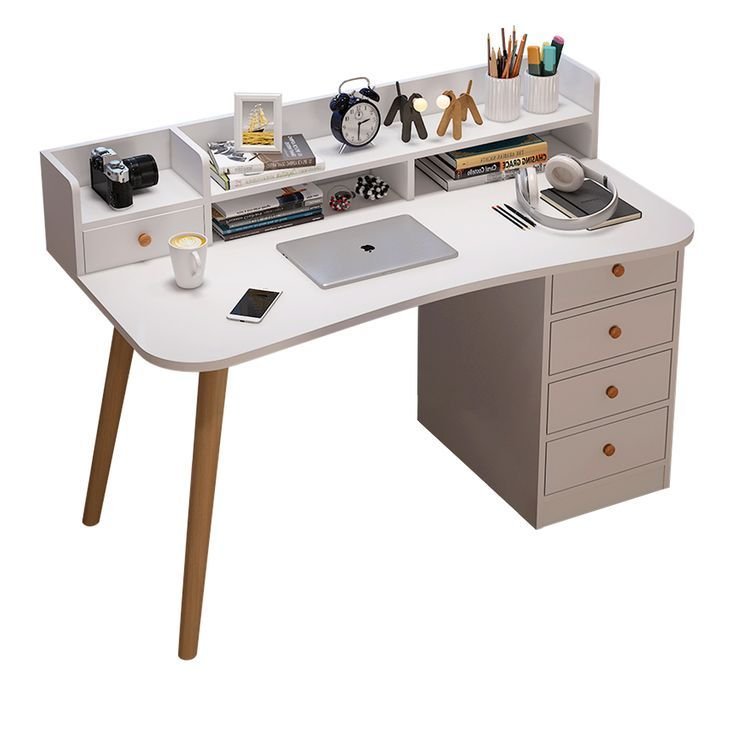
Unique designs with multiple materials
Unique designs with multiple Study Table Materials offer a creative and interesting way to design the study table. By combining different materials, you can create a unique style that stands out from ordinary study tables.
A popular option is the combination of wood and metal. This design combines the natural beauty of wood with the modern aesthetic of metal. The combination of warm wood tones and cool metal creates an attractive contrast and gives the room a touch of elegance.
Another option is to incorporate glass into the design. Using a glass top gives the study table an elegant look and makes the room appear brighter. The transparent material also makes the table easy to clean and maintain.
For those looking for an eco-friendly approach, they can use recycled or reclaimed material. For example, old wooden boards could be combined with iron pipes to create a rustic charm.
Choosing multiple study table materials also allows you to mix and match colors and patterns. For example, you can add colorful accents or use geometric shapes to give your study table a personal touch.
With these unique designs you have the opportunity to customize your study table and make it an inspiring workspace!

Conclusion
There are many factors to consider when choosing the right Study Table Materials. You need to consider durability and longevity, aesthetics and style, and environmental impact. Wood is a popular choice for its natural charm and sturdiness. Metal study tables, on the other hand, offer a modern look and are extremely durable. Glass can add elegance to your study table, while MDF can provide a cost-effective option with great versatility.
When it comes to children, you should go for kid-friendly study table materials that are both safe and durable. Lightweight materials can increase comfort, especially if your child has to move the table often.
Environmentally friendly choices are also important as they can contribute to sustainability. Choosing green study table materials not only shows your responsibility towards the environment, but can also set an inspiring example for others.
Finally, there is always the option of a customized study table materials with mixed materials. This allows you to create unique designs while meeting all functionality and style requirements.

3 Comments